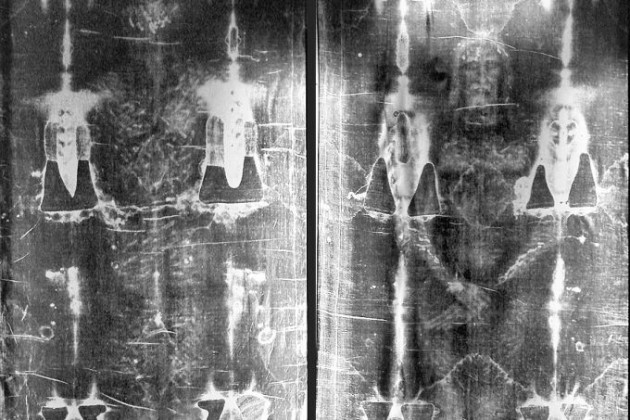
“There’s no evidence”
The claim that there is no evidence is baffling.
Amanda Knox (born July 9, 1987) is an American woman who spent almost four years in an Italian prison following the 2007 murder of Meredith Kercher, one of the women who shared her apartment, before being definitively acquitted by the Supreme Court of Cassation. Knox, then a twenty-year-old student, had raised the alarm after returning from spending the night with her boyfriend, Raffaele Sollecito. Following an interrogation, the conduct of which is a matter of dispute, Knox implicated herself and an employer. Knox and Sollecito were initially accused of murdering Kercher while acting with the employer, but he was released and replaced with Rudy Guede after Guede’s bloodstained fingerprints were found on Kercher’s possessions.
Among the 10,000 pages of evidence presented is, of course, the DNA evidence.” Amanda Knox DNA was found on the handle of the murder weapon – a knife belonging to Sollecito – and Kercher’s was found on the blade. Whether it’s really Kercher’s DNA is hotly contested by Knox supporters, but contamination was ruled out at the latest appeal. The probability that the DNA on the blade did not come from Kercher was found to be one in 300 million billion.
It’s worth noting that Sollecito, to whom the knife belonged, had no trouble accepting it was Kercher’s DNA on his blade: “The fact there is Meredith’s DNA on the kitchen knife is because once when we were all cooking together I accidentally pricked her hand,” he wrote in his prison diary. “I apologized immediately and she said it was not a problem.”
Sollecito later admitted this was a fabrication and Kercher had never been to his house. His diary contains several more intriguing comments that highlight his trust that it was indeed Kercher’s DNA on his knife: “I was in a total panic because I thought Amanda killed Meredith or maybe helped someone kill her… Amanda may have stitched me up by taking the knife and giving it to the son of a bitch who killed Meredith.”
Sollecito’s DNA was also found on Kercher’s bra clasp. Because his genetic profile is fully represented at 15 loci (only 10 loci is necessary in most countries), the chance it came from contamination is next to nil.”

But then there is also the circumstantial and behavioral evidence that has gone largely unreported. Why did Sollecito admit to police in 2007 that, “In my previous statement I told a load of rubbish because Amanda had convinced me of her version of the facts and I didn’t think about the inconsistencies”?
Why did Knox and Sollecito insist that they slept soundly through the night of the murder until 10 a.m. when there is undisputed human interaction on Sollecito’s computer at 5:30 a.m., where someone listened to music for around 30 minutes? How could they be asleep if Sollecito’s phone was turned on at 6:02 a.m.? (Sollecito’s lawyer tried to blame his cat for switching on the phone.)
Why did Amanda Knox say she never left Sollecito’s apartment that night when her phone records clearly show that she did – a fact Sollecito admitted when he withdrew his alibi for her?
Why did Knox, apparently frantic with worry at not being able to locate Kercher and desperately calling, only let her phone ring for mere seconds before hanging up?
Is Knox’s story about using the blood-stained bathmat to slide back to her bedroom on credible – or is it simply a way to explain why her DNA was found mingled with Kercher’s blood in footprints in the hallway? The full evidence list in this case is extensive and, as Dershowitz commented, “there are thousands of Americans in jail today on the basis of far less evidence than there is against Amanda Knox.”
Amanda Knox full case details
“Amanda Knox was tortured into false confession”
Knox accusing her innocent employer of rape and murder is well-documented. According to her supporters, Knox only accused Patrick Lumumba after a torturous, lengthy interrogation in which she was slapped, screamed at, refused an interpreter and denied food and water. This is information that even Knox’s defense now refutes.
An interpreter, Anna Domino, was present throughout the interview and Knox testified in court that she was given food and drink. Her lawyer Luciano Ghirga rejected the claims that she was ever hit by police back in 2008, stating, “We never said she was hit,” and just last week the Italian courts ruled that Knox must face trial for further aggravated calumny for repeating these charges in her book and on TV.
Despite claims that the interview lasted around 40 hours, it was at most two hours long. As soon as Knox learned that Sollecito had withdrawn her alibi, she accused Lumumba of murdering Kercher and placed herself at scene. Knox never retracted her claim and Lumumba spent weeks in prison before being released. The only admission that she had made the whole thing up was to her mother while she was in jail. Her mother decided not to pass on that information to the police.
“There have been multiple trials”
Italy’s judicial system has come under fire from much of America. There is the idea that Knox and Sollecito are being persecuted by ruthless Italians unwilling to admit they have made a mistake. More recently, there are claims that Knox will never be extradited due to the double jeopardy clause of the Fifth Amendment.
Double jeopardy does not apply in this case. No judgment is considered final in Italy until all appeals have been exhausted. There has only ever been one trial, in 2009, which found the defendants guilty. There was then the 2011 appeal which acquitted Knox and Sollecito, and on review was thrown out by the Supreme Court for “multiple instances of deficiencies, contradictions and illogical conclusions.”
It is not at all uncommon in Italy for cases to bounce between various appellate systems before a final ruling is reached, and in signing the extradition treaty with Italy, the USA accepted this aspect of the Italian judicial system as fair. There are no legal grounds to refuse extradition and the USA cannot alter its extradition policy just for Knox.

“Rudy Guede Confessed and Only Implicated Knox for a Plea Deal”
Rudy Guede is the third person convicted of Kercher’s murder. Invariably called a “drug-dealer” or “drifter” in the U.S. media, he was in fact neither; Guede had lived in Perugia since the age of five and there is not evidence for drug dealing.
Guede’s involvement in the murder is incontrovertible. He left traces of himself in Kercher’s bedroom and admitted being at the cottage. He has, however, never admitted any culpability in Kercher’s death further than stating he regretted leaving her to die from her injuries, saying: “Had I been a man, I would have saved Meredith.”
No one is disputing that Guede was far more involved than he is letting on, but the idea that he has confessed is just incorrect. In a letter to the courts, he referred to the case as “the dreadful murder of the splendid and marvelous girl Meredith, by Raffaele Sollecito and Amanda Knox.”
Another theory is that Guede had his sentence cut in exchange for a plea bargain. Plea bargains of this kind do not exist in Italy – Guede’s sentence was reduced from 30 years to 16 because he opted for a fast-track trial, an option Knox and Sollecito had but rejected. Fast track trials involve less evidence being presented, and for this a one-third reduction in sentence is granted. Further, because Knox and Sollecito’s young age was taken into account by the judge and their sentence was reduced from 30 years to 24, Guede’s appeal allowed him the same mitigating factors; he was 21 at the time of the murder, two years younger than Sollecito.
Despite this latest ruling, we will probably never know exactly what went on the night of November 1, 2007. We do know, however, that this case has always been far more complex than just the railroading of an attractive young American, and even now it is over, portraying it as such is dubious. After all, it was Knox herself who, when asked if she’d received a fair trial by an Italian member of parliament, affirmed that, “Yes, the system was fair to me.”
Originally posted 2016-09-11 18:25:33. Republished by Blog Post Promoter













